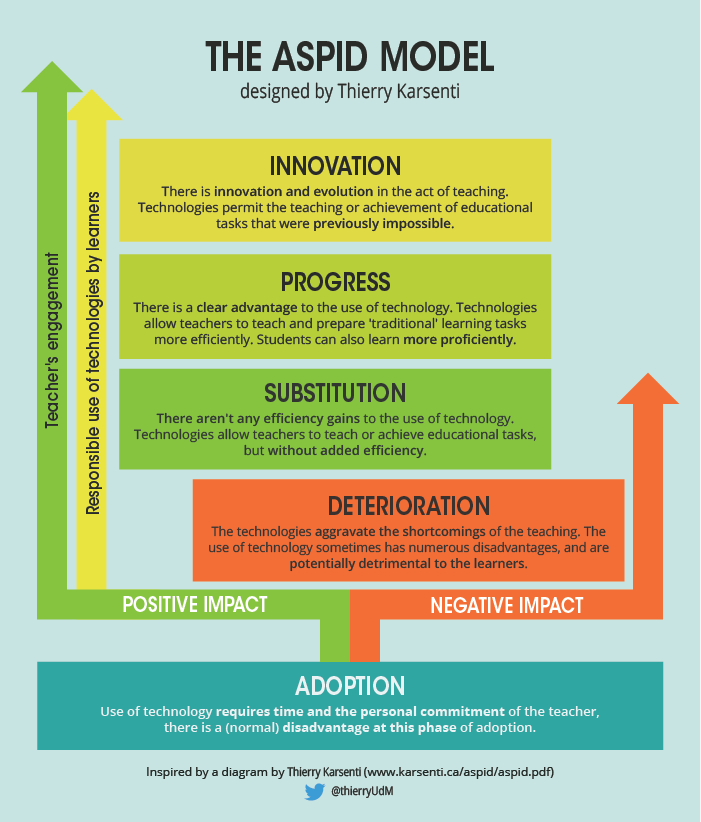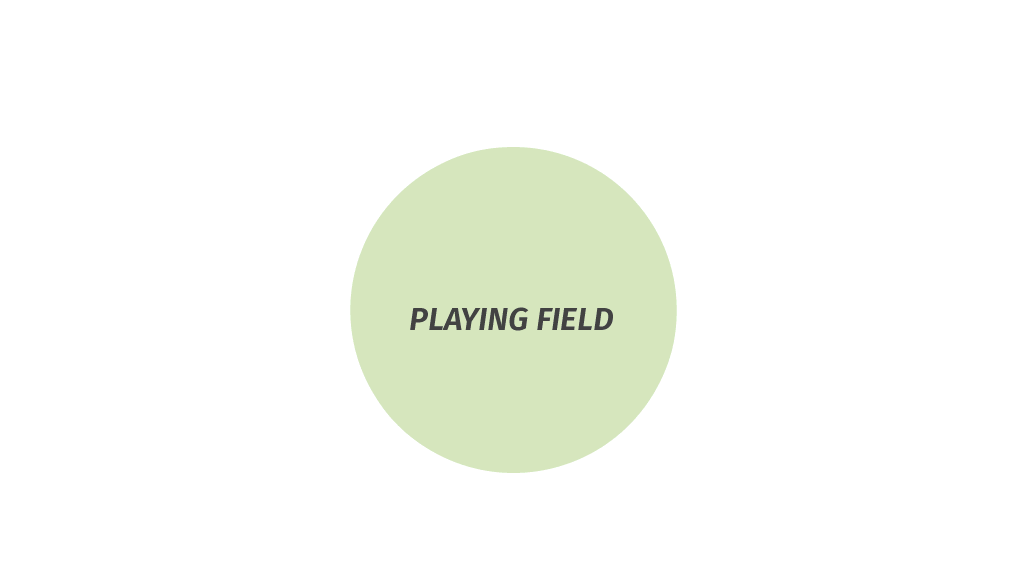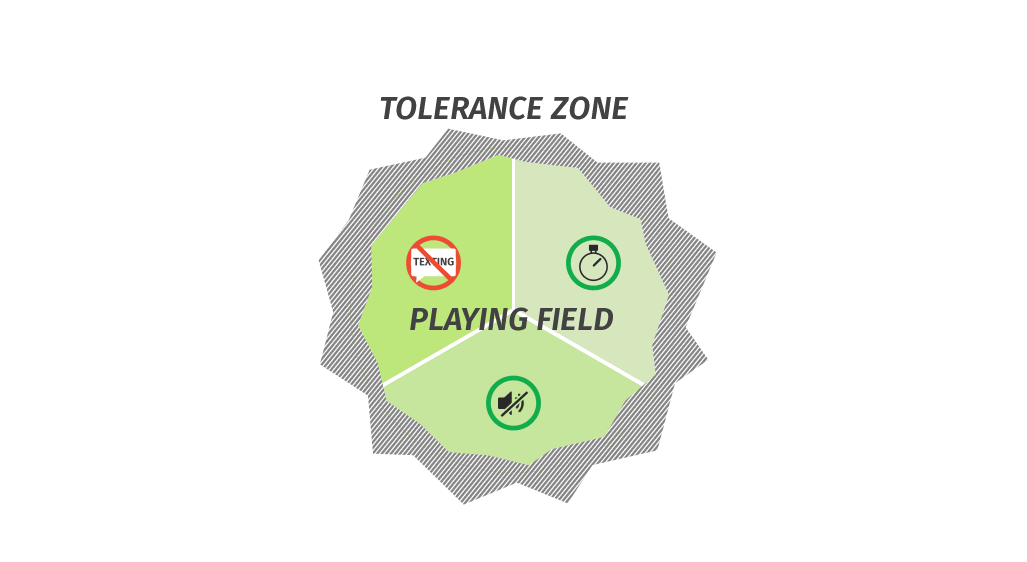Classroom Management in the Digital Era (Part 1): Balancing Consistency and Tolerance
What should teachers do with smartphones, tablets and computers in their class? Is it more sensible to ban them, manage their use or integrate them into learning activities?
For many teachers, the omnipresence of mobile devices raises questions about how to react when faced with potential distractions. Many teachers wonder whether they should intervene – and how. Regardless of your level of experience in teaching, it can be interesting to explore different strategies in order to ensure a certain consistency between your pedagogical practice and your classroom management style.
This featured report on Classroom Management in the Digital Era is divided into 3 parts. Each one corresponds to a step in the support process that I have developed as a pedagogical counsellor. Upon reading the different parts, you will be able to:
- Set limits for the use of mobile devices by students, while respecting your values and maintaining the desired atmosphere in the classroom (Part 1)
- Determine your approach to classroom management and identify corresponding tools and teaching strategies (Part 2)
- Discover strategies for engaging student learning (Part 3)
This 1st part of the featured report will allow you to establish an atmosphere in the classroom and delineate a code of conduct for the use of mobile devices. Pedagogical counsellors can find inspiration to create an approach that respects teachers’ personal values and pedagogical stance.
Table of contents
Classroom management is both a personal and a delicate subject. The different pedagogical conceptions and the fear of being judged by our colleagues (who may have more or less experience than us) mean that we rarely discuss this aspect of our practice.
When I began my career as a teacher, I was confronted with classroom management models that didn’t always correspond with my values or pedagogical approach. I therefore started searching for my own bearings in order to create an atmosphere for learning that was more attractive for both students and myself.
As a pedagogical counsellor, I have received a number of requests from teachers about how to manage digital devices in class. I pooled different resources and ended up developing an approach designed to support teachers which can be adapted to different pedagogical methods and multiple styles of classroom management. Humbly, I would like to share this with you, in hopes that it will help you establish an atmosphere for learning that is consistent with your pedagogical objectives and teacher profile.
Objectives
By the end of this 1st part, you will be able to:
- Access resources that will help you to define the learning atmosphere that you would like to establish
- Discover tools that will help you to define your level of tolerance
- Explore intervention strategies and tools, like the sociogram
Overview: Classroom Management in the Digital Era
Today teachers are constantly confronted with the use of mobile devices by students and are even being asked to integrate the use of digital tools to support teaching and learning. In 2012, CEFRIO informed us that 64.9% of adults from ages 18 to 24 owned a smartphone, compared to 31.5% of the entire adult population of Quebec.
The widespread usage of digital devices is compelling teachers and educational establishments to take a position on the different issues. It can also force you to adapt your classroom management practices, notably for:
- Managing potential distractions
- Determining permissible uses and appropriate times for their use
- Ensuring that this tool is used in service of the pedagogy (and not the opposite)
Behavioural models of classroom management
Classroom management: A collection of teacher strategies and behaviours that aim to create a classroom environment that lends itself to socialization, self-regulation of students as well as their engagement (on behavioural, affective and cognitive levels) in learning activities rather than any other activity.
Most of the theoretical models linked with implementing a classroom atmosphere conducive to learning come from behaviourist visions on classroom management. Along these lines, we can cite the models from Kounin (1970), Glasser (1986) and Gordon (1989). These models were developed well before the arrival of the digital tools that teachers and students are currently using. However these frameworks are still relevant for reflecting on classroom management in the digital era:
- Madona Moukhachen, Pedagogical Counsellor from Cégep Ahuntsic, presented a summary of the models [in French] and uses them to analyse a real case from the college network, in which the smartphone has become a source of distraction and disengagement for a student during group work.
- PERFORMA offers a course that aims to transpose theoretical frameworks into teaching practices as part of its Advanced training in college teaching program.
Digital tool integration models
Several researchers have been interested in the impact of digital tools on learning. Classroom management models within an ICT integration context also exist. Among these, we might mention Thierry Karsenti’s ASPID Model, which shows that the integration of digital tools in the classroom can generate either positive or negative effects, depending on how teachers use the technology and their commitment level.

A representation of Thierry Karsenti’s ASPID Model.
As with the integration of ICTs, a classroom management practice or the behaviour of students can either improve or deteriorate the atmosphere within the classroom. In this sense, Karsenti’s model provides a complementary reference framework. On the other hand, this model is is oriented towards a proactive approach by the teacher with respect to ICTs.
If you are reading this report, there is a good chance that your approach is actually reactive, which means that you are considering how much space digital tools should occupy in your teaching practice and how to support and supervise their use in your course. This contemplation may be the result of a situation you encountered in the classroom.
The support approach that I am suggesting will allow you to implement favourable conditions for student learning and success, while also respecting your educational approach, classroom management style and level of tolerance for mobile devices.
In Educational Practice: Your Classroom, Your Playing Field
To support my practice and the practice of teachers that I accompany, I gleaned some inspiration from prior models and existing resources in order to develop an approach that can easily be applied within the college context. This approach was first presented at the April 2017 REPTIC meeting.
Establishing your rules
To establish an atmosphere conducive to learning, building trust, collaboration and cooperation within your group, it is important to define the operational rules.
Imagine that you are playing a game for the first time where the rules are established by a game leader.
- If the rules of the game are unclear, the participants will probably opt for a trial and error method in order to identify what is mandatory, authorized, tolerated or prohibited.
- Example: Not knowing about netiquette, some students use language that is too informal when communicating by e-mail and expect an instantaneous response, which can irritate the teacher.
- If the rules are not coherent, the participants may not understand, or may feel they have been treated unfairly, and lose their motivation. They may even feel some resentment toward the game leader.
- Example: From the start of the semester, the teacher has tolerated students checking their phone. After catching a student on Facebook, he decides to ban cellphones. This group or the student involved reacts negatively to this measure.
When it comes to managing a group, the learning situation or the evaluation might be perceived as your playing field. The first step is to define the boundaries of this playing field, otherwise the members of the group will try to define them for you.
Each of the rules that you put into place corresponds to a section of your playing field. They need to stem from your personal values and your educational approach.

Define your “playing field” by putting clear standards for the use of mobile devices in place.
You can establish rules in cooperation with class members, but it is better to pre-define general principles to regulate your practice in order to assure that the learning context will be satisfactory, both for your students and yourself.
From the students’ point of view, the consistency of the teacher’s rules is essential for students to abide by them. Within the context of an evaluation, as with a regular class, it’s the teacher who defines the rules and who evaluates the students. Adding new rules or constantly modifying them can lead to additional stress, particularly for competitive or anxious students as well as students with learning disabilities.
Practical resources for creating your class rules
For your rules to be effective, I recommend that you that you draw your inspiration from the following principles:
- Start with an action verb
- Use positive wording to establish a climate that is conducive to collaboration
- Aim to establish a favourable context in which you and your students will be at ease
- Limit the number of rules to make them easier to remember and apply
Don’t know where to start?
Here are 2 exercises that will help you to reflect on your values, your approach and your personal level of tolerance for the use of mobile technologies.
- Review the following questions to frame your reflections on your intervention strategy and priorities.
- What type of classroom atmosphere do I want to establish that will help promote my students’ learning and success?
- What regulations (IPESA, internal governance) or constraints in my educational establishment have an impact on my classroom management?
- Would I feel right about removing a student who doesn’t respect the class rules for the use of mobile devices? Do I have the right to do this?
To further your reflection, I invite you to download the complete list of questions [PDF].
- Download this decision-making tool [Word, in French] created by the Université Laval as part of its excellent Guide d’accompagnement pour les enseignants sur l’utilisation des appareils mobiles en classe. This document provides various statements that will allow you to take a position with regards to different uses of mobile devices in class.
Finding your comfort zone
Since each rule is subject to a variety of interpretations, it is also important to define your tolerance zone with which to apply these rules. This zone corresponds to the acceptable deviations that you and the class members are willing to tolerate.
It is important that these acceptable deviations are quickly realigned in order to allow everyone to benefit from the learning experience.

The tolerance zone corresponds to the acceptable deviations from the class rules. Their boundaries should be defined by the teacher.
Many strategies exist to reduce the number of deviations from the established rules:
- Explicit teaching
- “Teaching, in parallel with discipline-related knowledge [competencies], learning strategies that allow students to better assimilate the knowledge” or the expected attitudes and behaviours. (Translated and adapted from: François Ruph, UQAT, 2012)
- Individual or small group meetings
- During one-on-one meetings, reaffirm the teacher’s expectations and the reasoning behind them.
- Reward and consequence systems
- Implement rewards, warnings or punishments designed to trigger the student’s motivation. The effectiveness of reward and consequence systems has attracted some criticism (1 and 2).
As Chantal Desrosiers explains in an article published on Profweb, it is important to determine the sanctions linked to each rule and the escalation process [in French]. It is recommended to plan for the logical consequences of disrespecting the rules in advance.
The logical consequences are explained in advance: They are not arbitrarily decided upon (…). They are directly linked to the problem and have an educational aim to settle the situation. [Translation]
As with the established rules, the logical consequences can also be created with the help of students.
Avoiding the breaking point
If you stray beyond the tolerance zone, it is possible that you will encounter the breaking point where conflicts with or between members of the class might occur or even degenerate. To avoid entering this zone, take a timeout so that you can re-establish, clarify or revise the ground rules.

The breaking point zone corresponds to a conflictual situation in which a student has broken a rule that is important to the teacher or the group.
If you fall into the breaking point zone, take the required time to analyze the situation, to identify the positive and negative influences and the different possibilities for intervention. It is often easier to intervene when you and the student in question have calmed down – preferably during a one-on-one meeting in order to facilitate a dialogue.
When intervening with negative leaders, I suggest that you provide an opportunity for each person to express why they disagree with the regulation that is being called into question. The objective is for the teacher and student to present their version of the facts, speaking in the first person (using “I”) and searching for mutually-acceptable potential solutions that are consistent with the desired group objective.
Rebuilding your bridges
When the situation goes beyond the breaking point, it is better to intervene quickly to right the situation.
Creating a sociogram can prove useful. Used as an intervention technique in several programs in the field of social science, the sociogram allows you to chart the class, providing a macro view of the interactions between individuals. You can also identify “negative leaders” as well as positive ones and explore different possibilities for intervention based on your observations (establishing teams, seating choices, etc.).

The sociogram charts interactions within a group. You can attribute colour codes to note the type of interaction. In this case, red lines denote a negative influence, while green ones indicate a positive influence. The black line indicates a neutral interaction between 2 people.
A simple hand-drawn sketch should be sufficient to chart the different actors and their interactions within the group, but you can also use a concept mapping tool. Online questionnaires administered to students can also help you to identify relationships between peers.
Conclusion
Throughout this first installment, you have probably noted that knowing yourself and your limitations, the coherency of your actions and the mobilisation of students are key factors for creating a climate in your classroom that is satisfying for everyone involved. These elements are that much more important when the time comes to integrate digital tools which allow for many learning opportunities… or distractions.
Putting the mutual comfort zone for teachers and students into practice will be explored in the next 2 installments of this featured report. They will address classroom management approaches and available tools as well as strategies for promoting student engagement (in French, translation slated for Winter 2018 semester).
Useful References
General references for the featured report
- CEFRIO (2012). La mobilité au Québec: une tendance en croissance [PDF]. NETendances, vol.3 (3).
- Comité de valorisation de l’enseignement sur les appareils mobiles, Université Laval (2017). L’utilisation des appareils mobiles en classe : Innover, bien apprendre, se respecter.
- Glasser, W. (1986). Control theory in the classroom. Perennial Library/Harper & Row Publishers.
- Glasser, W. (1998). Choice Theory in the Classroom. HarperCollins Publishers.
- Kounin, J. S. (1970). Discipline and Group Management in Classrooms. New York: Holt, Winehart & Winston, Inc.
- Kounin, J. S. (1977). Discipline and Group Management in Classrooms (2nd edition.). New York: Holt, Winehart & Winston, Inc.
- Kumar, L. and C. Holt. (2016). “Bring Your Own Device or Bring Your Own Distraction”. International Journal of School and Cognitive Psychology, vol. 3 (1).
- Moukhachen, M. (2016). La gestion de classe: comment faire? [PDF]. Developed as part of the project CLAAC (Classe d’apprentissage actif), Collège Ahuntsic and the Université de Montréal.
- Richard, M. and S. Bissonnette (1999). « Les systèmes d’émulation en salle de classe: une erreur due à l’unique recours au savoir d’expérience » [PDF]. Vie pédagogique, number 111, 47-50.
- Ruph, F. (2012). Stratégies pédagogiques et développement des stratégies d’apprentissage des étudiants (Participant’s guide). Retrieved from the Portail du soutien à la pédagogie universitaire website.
- Services éducatifs, C. S. des Samares (2013). « Les systèmes d’émulation ». Gestion de classe CS Samares.
Classroom management resources from the college network
APOP
Workshop APOP223-293 Gérer sa classe à l’ère des technologies
CDC (Centre de documentation collégiale)
You will find hundreds of entries for classroom management in the CDC’s ÉDUQ.info catalogue.
PERFORMA
- Course PED-905 La gestion de classe au collégial
- Meloche, F. (2006). « Prévenir pour mieux enseigner » [PDF]. Correspondance, vol.12 (1).
Profweb
- Desrosiers, C. (2015). Help! I Have 150 Messages in My Inbox This Week!. Retrieved from Profweb.
- Desrosiers, C. (2015). La gestion de classe – un sujet toujours d’actualité. Retrieved from Profweb.
From the journal Pédagogie collégiale
- Gingras, V., Langlois-Légaré, É., Lauzon, I. and M.-E. Pelland. (2010). “Behavioural problems in college” [PDF]. Pédagogie collégiale, vol. 23 (4), 4-9.
- Jacques, M. (1998). « Pour maintenir un climat propice à l’apprentissage » [PDF]. Pédagogie collégiale, vol. 11 (23), 9-10.
- Kozanitis, A. (2015). “The College Educational Relationship: A Vital Ally in Creating a Classroom Climate Conducive to Motivation and Learning” [PDF]. Pédagogie collégiale, vol. 28 (1), 1-5.
- Romano, G. (1993). « La discipline en classe » [PDF]. Pédagogie collégiale, vol. 7 (1), 30-33.
- Simard, F. (2012). “Will the Next Class Matter?’: Should We Insist on Class Attendance?” [PDF]. Pédagogie collégiale, vol. 25& (2), 31-33.
- Weston, T., Sana, F. and M. Wisehearth. (2014). “The Direct and Indirect Effects of Laptop Multitasking in Higher Education” [PDF]. Pédagogie collégiale, vol. 27 (2), 1-3.

